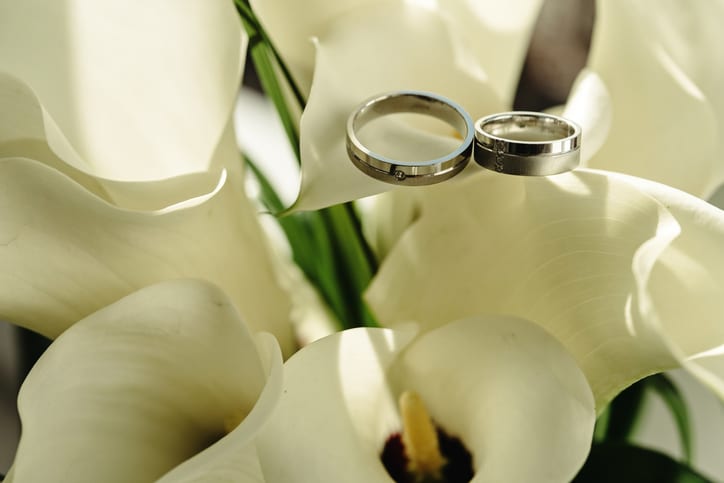 Editor’s Note: We have written about the Platinum Group Metals (PGMs) before, and explained how they are a family of six structurally and chemically similar elements that are most valued for their wide range of industrial, medical, and electronic applications.
Editor’s Note: We have written about the Platinum Group Metals (PGMs) before, and explained how they are a family of six structurally and chemically similar elements that are most valued for their wide range of industrial, medical, and electronic applications.
Today we will be discussing Platinum (Pt) itself, which has a high melting point and temperature stability, is highly corrosion oxidation resistant, and it is a good oxidation catalyst. It is most recognized as a metal used in catalytic converters, electronics, and in jewelry. Today, our guest writer, Calla Gold, writes about the use of platinum in jewelry.
Why Platinum Jewelry Turns Dull So Fast
By Calla Gold
Platinum is not a hard metal. It is 4 – 4.5 on the MOHs scale of hardness. This means it can be scratched by anything harder than it is. Diamond is ten on the MOHs scale and can easily scratch platinum. An amethyst is a seven on the MOHs scale and can scratch platinum.
For comparison, pure gold is 2.5, on the MOHs scale. That’s about the same hardness as your fingernail. That will not work for jewelry making. When white gold is prepared for jewelry making, by adding alloy metals, for example at 14kt or 58% pure gold, its hardness gets bumped up to 3.5 – 4. That looks about the same as platinum. But it’s not just the hardness that determines how your metal will wear and look over time. What the MOHs scale doesn’t show you, is the way your chosen metal reacts to harder obstacles when they collide.
Platinum is more dense than gold. The same amount of platinum weighs 60% more than gold. This is because on a molecular level there are more and smaller molecules packed into that little bit of space in platinum. Platinum’s density allows it to be used in a purer form than gold. This density translates to strength. But, that does not make it a super hero.
Platinum is also a soft metal. When it gets a scratch or a micro-dent, it is actually moving out of the way of the harder item to which it is colliding. By softly yielding and getting micro-dents to a state where no part of the surface hasn’t moved, the platinum becomes dull.
To compare, 14kt White gold, which has been alloyed with stronger metals to make it into jewelry and make its normally yellow color white, becomes a harder metal than platinum. If banged against a hard surface, the white gold can leave a tiny bit of itself behind on the harder surface and show a scratch on its surface. The scratch will be very thin as the hard metal resists the harder surface. The platinum band scraping against the same surface moves, and its scratch may look a bit deeper. This is because the metal is softer. Its response to the surface is to yield, to get out of the way. But because of its density, it does not leave a bit of itself behind.
The final effect is that white gold, though it may have many fine scratches, is still shiny – while platinum will become dull. (View this video to see the differences in the dulling of platinum and white gold.)
Some people have trouble telling the difference between white gold and platinum, but as you can see there is a big difference.
The best way to accurately assess if a piece of jewelry is made of gold or platinum (or some other material) is to use an XRF precious metals analyzer. This X-ray Fluorescence technology can be utilized as a fast, simple, nondestructive solution for precious metal analysis. You can measure the content of all gold, platinum, and other precious metals, as well as determine the presence and concentration of other trace, alloying elements, and dangerous heavy elements, which could impact health and the valuation of the pieces – not to mention how shiny or dull they may become.
Calla Gold is a Santa Barbara Jeweler specializing in custom jewelry design and jewelry repair, and the author of Design Your Dream Wedding Rings From Engagement to Eternity.
Learn more about Precious Metal Testing.






This article is truly very informative, thank you so much for taking so many efforts and giving us this amazing article you have explained is in detail about platinum jewelry, which I would love to share this with my friends and family as well.
ty
Amazing Post! Thanks for sharing the valuable content.
Although I get why people tend to lean toward platinum but there are cases where platinum is not the best choice. when platinum experiences some kind of dent it is very hard to get it back into its original form. that’s why I would recommend white gold over platinum. Great content though guys!
My white Gold was way easier to scratch/dent than Platinum.
Mando
Fantastic ways to explain. I found here what I was looking for. Thanks a lot.
Hey , couldn’t ask for anything better , your content is amazing thanks for sharing it .
Yes platinum good choice for jewellery but depend on variant
Awesome article… I absolutely love platinum. Very informative and helpful knowing all about my favorite element. Thanks so much!!
This article has some technical errors. Such as: Platinum is not 60% denser than gold (it’s about 11%), and density does not necessarily correlate to strength (e.g., steel is much stronger than lead). FYI
The insights into platinum’s characteristics and how it wears over time are truly enlightening. It’s essential to understand these nuances when considering platinum for jewelry. Thanks for sharing this valuable information!